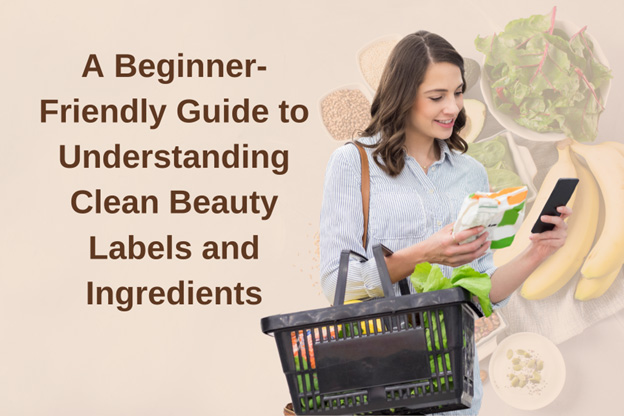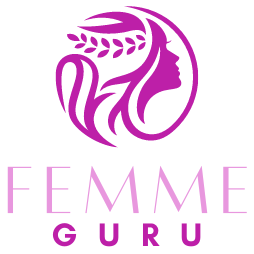A Beginner-Friendly Guide to Understanding Clean Beauty Labels and Ingredients

The beauty aisle can feel like a maze—especially when every product claims to be “natural,” “organic,” “clean,” or “non-toxic.” But what do those words actually mean? Are they just clever marketing, or do they signal real benefits for your skin and health?
If you’re new to the world of clean beauty and feeling a little overwhelmed, you’re not alone. This beginner-friendly guide will break down the jargon, explain what to look for (and avoid), and help you shop smarter—so you can build a routine that’s truly good for your skin.
🌿 What Is Clean Beauty, Really?
“Clean beauty” refers to products made without ingredients that are known or suspected to harm human health. These may include harsh chemicals, hormone disruptors, and allergens. But clean beauty isn’t just about what’s left out—it’s also about transparency, safety, and sustainability.
Clean doesn’t always mean all-natural or organic. Instead, it focuses on safe, non-toxic ingredients—whether they come from a plant or a lab.
🧴 Common Buzzwords—Decoded
Here’s what you need to know about the most common labels:
| Label | What It Usually Means |
|---|---|
| Natural | Derived from nature, but not always free from processing or preservatives. |
| Organic | Ingredients are grown without synthetic pesticides. Look for certification (e.g., USDA). |
| Non-Toxic | Free from ingredients known to cause harm. This term is not regulated, so use caution. |
| Clean | Free of potentially harmful ingredients. Definitions vary by brand or retailer. |
| Fragrance-Free | No added scent. Better for sensitive skin. |
| Cruelty-Free | Not tested on animals. Doesn’t mean vegan. |
| Vegan | Contains no animal-derived ingredients. |
💡 Tip: Just because something is labeled “natural” or “organic” doesn’t mean it’s safe or effective. Always read the ingredient list.
🚫 Ingredients to Avoid in Clean Beauty
Not all chemicals are bad, but some are linked to skin irritation, hormone disruption, or long-term health concerns. If you’re starting out, consider avoiding these common culprits:
- Parabens (methylparaben, propylparaben) – linked to hormone disruption
- Phthalates – often hidden in “fragrance”
- Sodium Lauryl Sulfate (SLS) – a foaming agent that can irritate skin
- Formaldehyde & releasers – used as preservatives, but are potential carcinogens
- Synthetic Fragrance – can contain hundreds of unlisted chemicals
- Toluene – found in nail polish; toxic to the nervous system
- Triclosan – an antibacterial that may affect hormones and gut health
🔎 How to Read a Clean Beauty Ingredient Label
Reading ingredient lists can feel like reading a science textbook. Here’s how to simplify it:
- Start with the first five ingredients. These make up the bulk of the product.
- Look for recognizable names. Plant oils, extracts, and clays are good signs.
- Use ingredient checkers. Apps like Think Dirty, INCI Decoder, or EWG’s Skin Deep can help you spot red flags.
- Beware of “fragrance” or “parfum.” Unless it’s labeled as natural or essential oil-based, it may hide harmful chemicals.
🧼 Clean Beauty Staples to Try
Not sure where to start? Begin with the basics:
- Clean Cleanser: Look for gentle, sulfate-free options (e.g., with aloe or chamomile).
- Non-Toxic Moisturizer: Choose one with hydrating oils like jojoba, squalane, or shea butter.
- Mineral Sunscreen: Use zinc oxide or titanium dioxide-based SPF for a safer option.
- Natural Lip Balm: Skip petroleum-based products in favor of beeswax or plant butters.
🛍 Where to Shop Clean
Several retailers now curate clean beauty sections to help simplify your search:
- Credo Beauty – strict standards, ingredient transparency
- The Detox Market – focuses on sustainable and safe beauty
- Sephora Clean at Sephora – products free from 50+ harmful ingredients
- Target Clean – budget-friendly clean beauty alternatives
✨ Final Thoughts: Your Clean Beauty Journey Starts Small
Switching to clean beauty doesn’t mean you need to toss everything in your cabinet overnight. It’s about making mindful swaps—one product at a time.
💬 Your Challenge:
Pick one product you use every day (like your moisturizer or lip balm) and find a clean alternative this week. Read the label, research the ingredients, and notice how your skin responds. Your health and future self will thank you.



